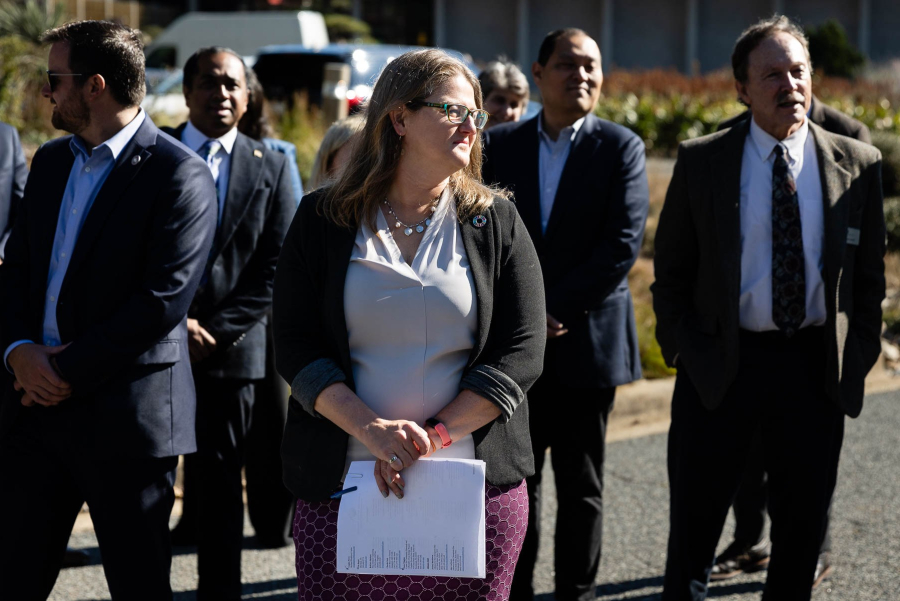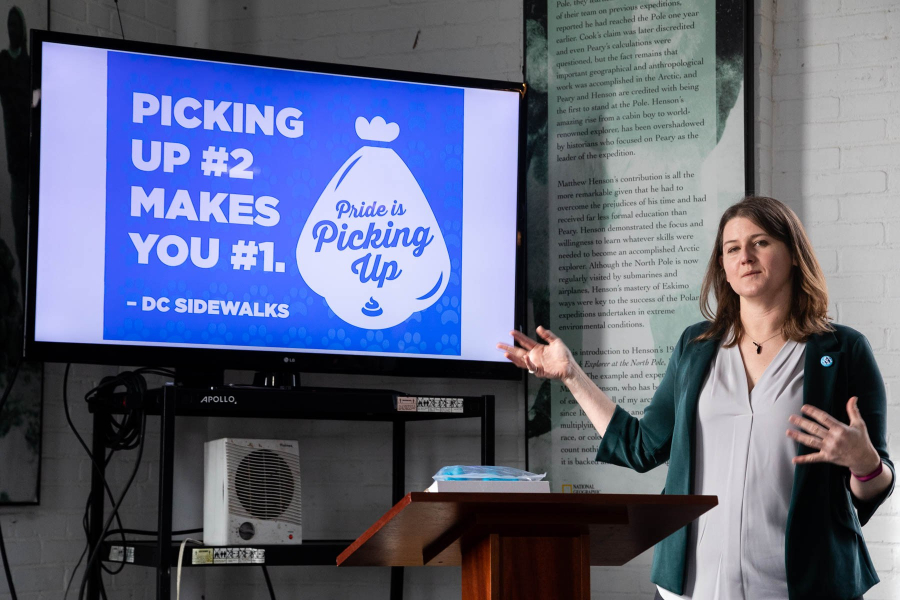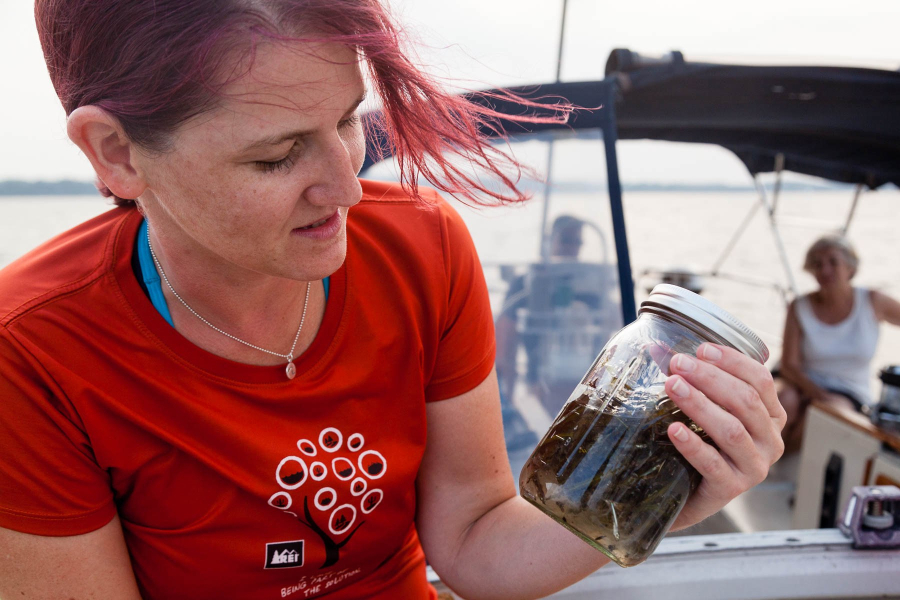D.C. environmentalist shares her biggest takeaways from chairing the Stakeholders’ Advisory Committee
Thank you to Julie Lawson for three years of incredible leadership!

This year, Julie Lawson ended her impactful three-year run as the chair of the Chesapeake Bay Program’s Stakeholders’ Advisory Committee (Committee), which represents the residents and stakeholders of the watershed. Through reports, recommendations and outreach, the committee members advise Bay Program leadership to ensure its work is aligned with the interests of the public.
We sat down with Julie to ask about her experience serving on the Committee as well as some of her thoughts on the Chesapeake Bay Program at large.
What background and skills did you bring to the Stakeholders' Advisory Committee and how did you use that in your role as chair?
When I was appointed, I was the founder and executive director of Trash Free Maryland, a nonprofit focused on using policy and behavior change to reduce trash pollution in Maryland. The reason I founded the organization is because there weren’t any dedicated to preventing trash pollution, but rather just focused on cleanup and recycling. My vision, and personal life mission, is to clean up the Anacostia River, make it a hub for recreation and a source of pride for people in the community.
What is your favorite memory from your tenure as chair?
I think my favorite memory as chair would be both of the Chesapeake Executive Councilprivate lunches that I’ve attended. I had the opportunity to speak forcefully on behalf of the committee and have the captivated attention of powerful decision makers. I felt proud of the committee, as well as my ability to communicate on its behalf in those instances.

How has your impression of the Chesapeake Bay Program changed since becoming a member of the Stakeholders' Committee?
My initial encounters with the Chesapeake Bay Program had only been with its leadership, so I had no real comprehension of the scale of the program. The partnership is much larger and more complicated than people are aware of. I regularly tell people that the Stakeholders’ Committee is the vanguard for where the Bay Program as a whole, thinks it wants to go, particularly when it comes to Diversity, Equity, Inclusion and Justice (DEIJ), centering people, and balancing emerging issues with traditional and regulatory concerns.
However, as the partnership starts to look beyond 2025, when the majority of the goals in the Chesapeake Bay Watershed Agreement reach their deadline, it is apparent that this will continue to be the direction the program will head.
I try to push other partners to think about how they can learn from the Committee and support them in being that vangard, so we are not relegated to figuring it all out on our own.
How has serving on the Stakeholders' Committee and in Chesapeake Bay Program committees helped you in your professional career?
Networking has significantly impacted my tenure as chair representing the Stakeholders’ Committee on the Management Board and Principals’ Staff Committee. Meeting individuals within the Committee as well as from the broader program and partnership has broadened my perspective. Opportunities I’ve had to engage with diverse viewpoints from various jurisdictions and find commonalities in our goals has been very exciting. These relationships have helped me understand D.C.’s local government better because I have a better understanding of the types of challenges the District faces in coordinating with the program and communicating its objectives, particularly as it relates to funding as well as a jurisdiction that is fully in the watershed but does not touch the Bay itself.

What do you hope for the Chesapeake Bay Program in the next two years and beyond 2025?
I hope they can figure out how to truly center people. I hope we as a Committee can figure that out as well. To know why we are doing all this work, and who it is for. I think generally, a lot of people in government forget they are also residents. So how would they want their government to function, and how would they want to be represented? Because unless you have diverse voices and perspectives at the table, you have a lot of blind spots.
The Stakeholders’ Advisory Committee holds quarterly meetings that are open to the public to join virtually. To learn more about the impactful work of the Committee, including our resources and latest recommendations, visit the Stakeholders’ Advisory Committee webpage.

Comments
There are no comments.
Thank you!
Your comment has been received. Before it can be published, the comment will be reviewed by our team to ensure it adheres with our rules of engagement.
Back to recent stories